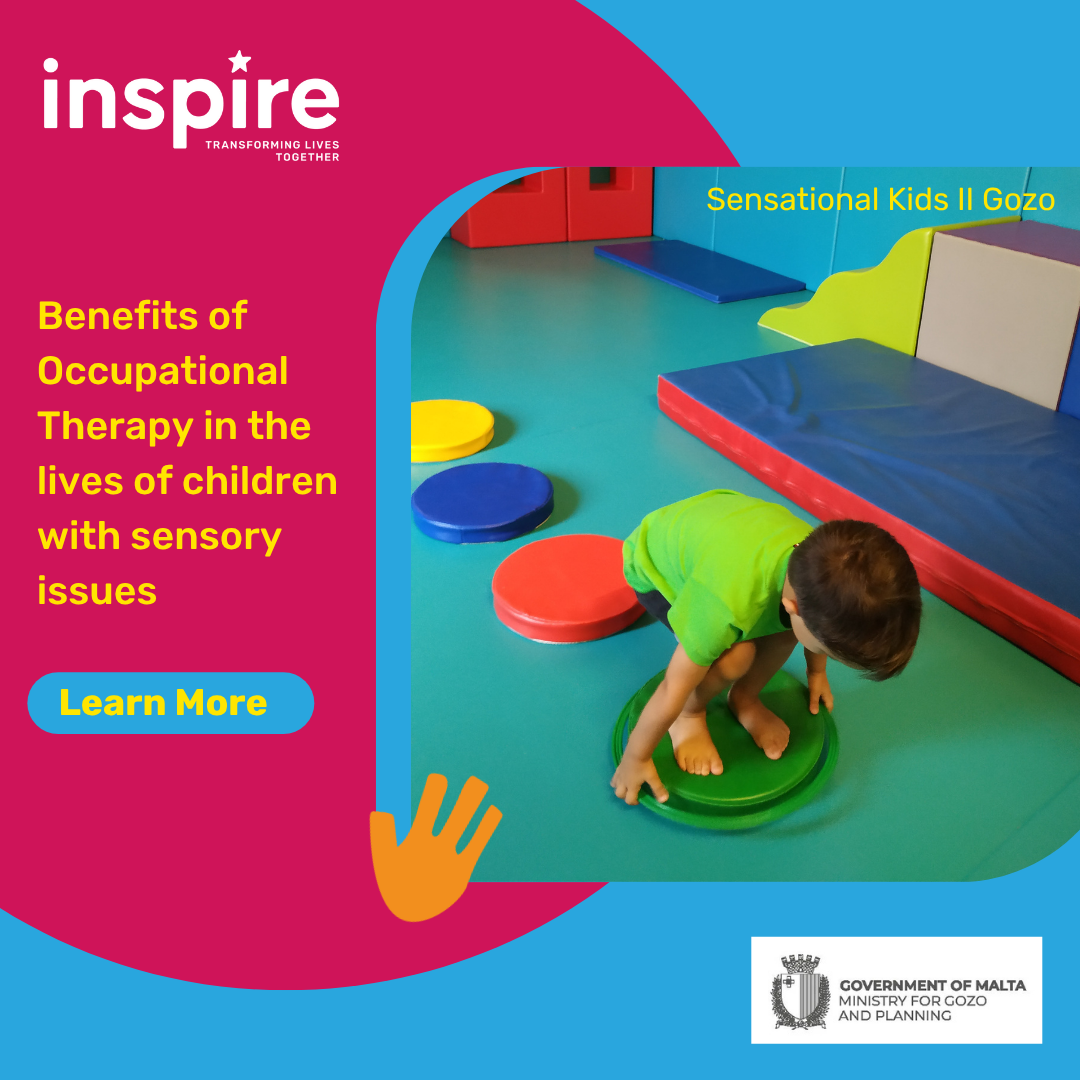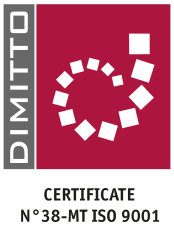
Sensational Kids II Project
Through the Sensational Kids II project, funded by the Ministry of Gozo & Planning provides sensory integration assessments and intervention at Inspire Gozo. Through this project, we are able to reach more children who exhibit sensory challenges with or without a formal diagnosis.
Occupational therapy (OT) offers numerous benefits for clients with sensory integration issues. These issues can affect how individuals process and respond to sensory input (like touch, sound, movement, and visual stimuli), and they’re often seen in conditions like autism spectrum disorder, ADHD, developmental delays, and sensory processing disorder. Here’s how OT can help:
1. Improved Sensory Processing
- OTs use sensory integration therapy to help clients respond more appropriately to sensory input.
- This can reduce hypersensitivity (e.g., overreaction to sound or touch) or hyposensitivity (e.g., underreaction to sensory stimuli).
2. Enhanced Self-Regulation
- Therapy helps clients develop strategies to manage overwhelming sensory input.
- This leads to better emotional control, reduced meltdowns, and improved attention and focus.
3. Better Motor Skills
- Sensory processing is closely linked to motor planning and coordination.
- OT helps improve gross motor skills (like running or jumping) and fine motor skills (like writing or buttoning a shirt).
4. Increased Participation in Daily Activities
- OTs focus on enabling clients to perform tasks like dressing, eating, grooming, and schoolwork independently.
- Clients learn adaptive techniques and routines that help them cope with challenging environments.
5. Boosted Confidence and Social Skills
- With improved sensory regulation, clients often feel more comfortable in group settings.
- This can lead to better social interactions, reduced anxiety, and stronger peer relationships.
6. Individualized Support
- OT interventions are tailored to each person’s specific sensory profile and daily needs.
- This personalized approach ensures therapy is both effective and meaningful.
7. Support for Caregivers
- Therapists educate and support parents with practical strategies to use at home and share with the LSE at school.
- This ensures consistency across environments, which improves outcomes.
Example OT Activity: “Sensory Obstacle Course”
Goal: Improve body awareness, motor planning, and regulation of sensory input.
How it works: The therapist sets up a course with different sensory challenges, like:
- Jumping on a trampoline (vestibular input)
- Crawling through a tunnel (proprioceptive and tactile input)
- Balancing on a beam (balance and coordination)
- Picking up small objects with tweezers (fine motor and tactile)
- Weighted blanket (deep pressure, calming)
Why it helps:
- Engages multiple senses in a structured way.
- Helps the client learn how to process and respond to different stimuli.
- Can be adjusted to calm or alert the nervous system, depending on the child’s needs.
This initiative is being supported by the Ministry for Gozo and Planning’s NGO Scheme, a funding programme for Voluntary Organisations on the Island of Gozo. This initiative/publication reflects the views only of the author, and the Ministry for Gozo and Planning cannot be held responsible for the content or any use which may be made of the information contained therein.


